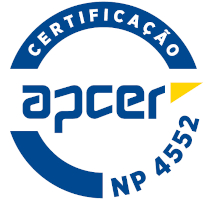Estudo das interacções nemátode-fungos na doença da murchidão do pinheiro
- INIAV - Instituto Nacional de Investigação Agrária e Veterinária(líder)
- Universidade de Évora(parceiro)
Resumo
A doença da murchidão do pinheiro (DMP) é uma das maiores ameaças para as florestas de coníferas em todo o mundo e com um forte impacto económico no país, ainda que a preocupação com as possíveis repercussões desta doença seja de âmbito europeu. A doença resulta de uma complexa interacção entre três agentes biológicos muito distintos: o nemátode da madeira do pinheiro (NMP), Bursaphelenchus xylophilus, o seu inseto-vector, Monochamus galloprovincialis e a árvore hospedeira, Pinus spp. O NMP alimenta-se dos fungos do azulado da madeira que habitam o hospedeiro para aumentar a sua taxa de reprodução e superar a resistência da árvore. Uma vez que essas relações não têm sido investigadas, PineEnemy focou-se no esclarecimento da estrutura e dinâmica das interações entre o nemátode e comunidade fúngica que lhe está associada, com o objetivo de melhor compreender o complexo da DMP. Foram seleccionados três locais de estudo, em zonas consideradas como focos graves da doença em Portugal, e a amostragem prevista visou permitir a análise completa da micoflora de pinheiros afetados pelo NMP. Foram ainda capturados M. galloprovincialispara estudo do transporte forético de fungos e a sua relação com o transporte de NMP. Do mesmo modo, o conteúdo intestinal dos nemátodes foi amostrado quanto à presença de fungos usados como fonte de alimento pelo NMP na sua fase micetófaga obrigatória. A micobiota foi avaliada através de duas abordagens distintas e complementares: com isolamento dos fungos em cultura e através de métodos não-cultiváveis, com análise metagenómica, por sequenciação massiva de amostras relevantes. Os isolados obtidos, com particular ênfase nos fungos do azulado da madeira, constituem uma coleção caracterizada e identificada por métodos fenotípicos e moleculares. O papel dos isolados relevantes no ciclo de vida do NMP foi avaliado tanto in vitro como através de ensaios em estufa.
A equipa do projeto reúne investigadores do INIAV, que desde o início liderou a pesquisa da doença causada pelo NMP, tanto a nível nacional como europeu, nas áreas de Nematologia, Micologia e Entomologia. Em particular, o IR (ML Inácio) possui uma vasta experiência no estudo das interações entre agentes bióticos tendo a capacidade de planear e coordenar as tarefas do projecto. A equipa conta também com o Prof M Mota, nematologista responsável pela deteção do NMP em Portuagl, em 1999, e C Vicente (Univ Évora), com experiência na investigação das comunidades microbianas associadas ao NMP. A equipa de consultores é composta por um investigador com forte know-how em NGS e bioinformática (Univ Tuscia, IT) e um patologista florestal de renome mundial (Univ Aberdeen UK). PineEnemy gerou um conhecimento mais robusto sobre as diferentes fases do ciclo de vida de B. xylophilus e a teia de interacções que estabelece como o seu insecto-vector, as comunidades de fungos e as árvores em declínio, visando contribuir para a implementação de novas abordagens para o controle da doença que tem devastado as florestas de pinheiro.
Objetivos, atividades e resultados esperados/atingidos
Objetivos
PineEnemy aimed at study the fungal community occurring in pine trees infected by B. xylophilus in order to elucidate the importance of this Kingdom in the biological interactions occurring in the pine wilt disease complex. All PWD components (PWN, insect-vector and host tree) can harbour a range of microorganisms, changing both temporally and spatially. The work in PineEnemy is to characterize the mycobiota present in the different phases of the PWN life-cycle, insect-vector and pine trees using two complementary approaches: culture methods and the emerging technique of barcoded pyrosequencing of the ITS rDNA region combined with the Illumina MiSeq platform (Schmidt et al. 2013), hence providing a robust analysis of the fungal community present in all phases of PWD progress. Three bio-geographical locations, considered severe foci for the disease in Portugal by Portuguese Forestry Authorities, are used as field sites: the Setúbal Peninsula (Centre/South) (S1), Gois (Centre/North) (S2) and Madeira Island (S3). These locations have been chosen to complement ongoing research on the bacterial communities associated with PWN, selected in the project FCT-MICRONEMA.
Task 1 (T1) comprises sample collection from the three PWD sites in the first year of the project. At least 15 symptomatic pine trees were selected along with the same number of healthy trees of the same age, chosen at random, at each site. Trees were felled and cut into stem discs for analysis. The sampling protocol will allow complete analysis of the mycoflora of both PWN affected pines and healthy trees. Sampling started at the beginning of 2018 and continued until April of the same year. At the same time, pinewood nematodes were extracted from wood samples using the Baerman funnel technique and, after surface sterilisation, sliced in two longitudinally to release the gut contents. These contents were maintained in suspension, in PCR tubes with a drop of water for immediate processing or stored at -20°C. Following T1, samples were analysed by the two different and complementary approaches: metagenomic analysis (non-culturable methods) and culture-dependent methods.
In Task 2 (T2), the large-scale sequencing will provide an extremely powerful tool to determine the true level of phylogenetic diversity in the fungal communities associated with the pinewood nematode. Total genomic DNA was extracted directly from pine infected and healthy wood tissues (used as a negative control), and from the intestinal contents obtained from the nematodes. High throughput metabarcoding using fungal barcode marker ITS rDNA, combined with an Illumina MiSeq platform is particularly useful for the analysis of high numbers of samples. Pyrosequencing using these markers provides an exhaustive characterization of the mycological community in the samples and allows the less-abundant taxa to be determined through large scale sequencing, hence enabling analysis and comparison of the changes in the mycological diversity of pines affected by the pinewood nematode. In the same way, the fungal community used as nutrition by the nematode was characterized.
In Task 3 (T3), the culturable fungi, paying particular attention to putative blue-stain fungi (Ophiostomatales), was obtained from each sample (both wood and the nematode gut) in selective artificial media, to provide a collection of isolates for full characterization and identification using phenotypic and molecular methods. Pure cultures of each fungus were obtained and comprehensively characterized and identified based on i) cultural and morphological features and growth studies on different media; ii) mating studies - the isolates were crossed, based on the production of anamorph structures and geographical location of isolation; the cultures examined regularly for the presence of ascomata; iii) extraction of DNA from fungal isolates was done, followed by PCR and DNA sequencing for species identification using a multigene approach employing ribosomal and protein-coding genetic markers. Four markers genes were amplified by PCR for sequencing and phylogenetic analysis: the ITS2 and partial large subunit (LSU) of the rDNA, the actin gene, the b-tubulin gene and translation elongation factor-1-alpha (TEF-1).
Task 4 (T4) is focused on inoculations of Pinus pinaster seedlings and other pine tissues with the blue-stain species identified in T3, both with and without simultaneous PWN inoculations in order to determine which fungi are important in nematode development in the various life cycle stages. Over a period of 2 months, wilting symptoms are monitored for each treatment; nematodes are extracted from the inoculated plants and enumerated. Correlations between wilting symptoms, fungal presence and nematode development were made. Temporal developmental stages of Bursaphalenchus xylophilus were examined, including assessment of life cycle stages and numbers of individuals produced on pine branch segments inoculated with the different isolates of blue-stain fungi under laboratory conditions.
To investigate the putative transport of fungi by the insect-vector of PWN, Monochamus galloprovincialis, in Task 5 (T5), beetles are obtained from the network of multi-funnel traps lured with Galloprotect 2D-Plus, the most efficient commercially available pheromone for this species, already installed in each sampling site. Traps were placed on site at the beginning of June 2016 and left until the end of September 2016. Traps were visited weekly to collect the insects that are caught. Beetles were subject to examination using the methods described in in T2 and T3: their external mycobiota was recovered by washing and plating techniques, with culturing. Morphological as well as NGS assessment of Monochamus borne fungal diversity by direct amplification of ITS sequences from the washings of the insects was also performed. PineEnemy, therefore, will provide robust information on the species of fungi associated with each element of the pine wilt disease complex and moreover, will determine whether there are preferred associations between specific fungal phylogenetic groups and PWN. The project brings together Portuguese researchers from INIAV and University of Évora (MED), and a research scientist experienced in next generation sequencing and bioinformatics from the University of Tuscia IT and a forest pathologist of worldwide reputation (Univ Aberdeen UK) as consultants.
The INIAV team is composed of entomologists (E Sousa and P Naves) and a mycologist (H Bragança) and a Superior Technician (A Fontes). F Nóbrega is expert in molecular identification of fungi and nematodes. The PI (ML Inacio) has long experience in interactions between biotic agents, particularly in the assessment of fungal diversity in diverse matrices (wood, insects, and nematodes) by culturable methods, with vast know-how and skills in project development and team coordination. In addition, she has academic qualifications in both mycology and nematology, giving her the experience required to supervise the interdisciplinary tasks and ensure their timely completion, through promotion of communication between the different partners. She is also highly experienced in the dissemination of knowledge through reports, publications in SCI journals and conferences organization. ML Inacio is fully committed to the work in this project as a PI (45%).
Atividades
T1 - Wood sampling and nematode collection
T2 - Identification of PWD-associated fungal communities through metagenomic analysis
T3 - Characterization of candidate fungi (Ophiostomatales) for PWN feeding
T4 - Testing the effect of PWN specific associated fungi on the nematode life-cycle
T5 - Investigation of the putative transport of blue-stain fungi by the insect-vector Monochamus galloprovincialis
T6 - Scientific activity spreading actions
- Ações de divulgação de cultura científica;
- Ações Promoção e disseminação do conhecimento;
- Publicações técnicas/científicas;
- Conferências, seminários ou fóruns;
- Ações junto dos sectores alvo;
Resultados
As a preliminary result, the insect vector of the PWN was found to transport fungi putatively involved in the nematode-insect attraction thus facilitating disease dispersal. This result and further doubts, coupled with the lack of research in this area, both in national and international level, led to the build-up of the present project PineEnemy. This preliminary study revealed a vast mycobiota associated with the pine wilt disease complex, namely with the insect vector (Inácio et al. 2015). This result further pointed out the interest of studying the mycobiota associated with the nematode and the affected host trees. A very interesting project both in what concerns the different tasks as the connections with other researchers coming from different countries and deeply concerned about PWN spreading all over Europe. Survey of PWN procedures and exceptional skills for the study of this quarantine organism.
Pires D, Vicente CSL, Menéndez E, Faria JMS, Rusinque L, Camacho MJ, Inácio ML. The fight against plant-parasitic nematodes: Current status of bacterial and fungal biocontrol agents. Pathogens, 11:1178. https://doi.org/10.3390/pathogens11101178. Handle: http://hdl.handle.net/10174/32705
Vicente CSL, Soares M, Faria JMS, Espada M, Mota M, Nóbrega F, Ramos AP, Inácio ML. Fungal communities of the Pine Wilt Disease complex: Studying the interaction of Ophiostomatales with Bursaphelenchus xylophilus. Front. Plant Sci., 13, doi:10.3389/fpls.2022.908308, Handle: http://hdl.handle.net/10174/32981
Pires D, Vicente CSL, Inácio ML, Mota M. The potential of Esteya spp. for the biocontrol of the pinewood nematode, Bursaphelenchus xylophilus. Microorganisms, 10:168, doi:10.3390/microorganisms10010168 Handle: http://hdl.handle.net/10174/31333
Vicente CSL, Soares M, Faria JMS, Ramos AP, Inácio ML. Insights into the role of fungi in pine wilt disease. J. Fungi, 7:780, doi:10.3390/jof7090780. Handle: http://hdl.handle.net/10174/30882
Faria JMS, Barbosa P, Vieira P, Vicente CSL, Figueiredo AC, Mota M. Phytochemicals as biopesticides against the pinewood nematode Bursaphelenchus xylophilus: A review on essential oils and their volatiles. Plants, 10:2614, doi:10.3390/plants10122614 Handle: http://hdl.handle.net/10174/30891
Pires D, Faria JMS, Inácio ML, Vicente CSL, Mota M. Pinhal sustentável: O combate ao nemátode da madeira do pinheiro com fungos antagonistas. Vida Rural, pp. 72 – 77
Vicente C, Inácio ML. Estudo das interações nemátode-fungos na doença da murchidão do pinheiro – PineEnemy|MycoExplorer. Voz do Campo – Agrociência. Março 2021, V-VI
Mais informações na página oficial do projeto: https://projects.iniav.pt/pineenemy/





















